

Notable People at the 1893 World’s Fair
Among the millions of people attending the Columbian Exposition were countless famous or soon-to-be famous names. The list below is an attempt at counting. What constitutes famous? Having a Wikipedia page today is the reasonable requirement used to assemble most entries in this list.
Posts for some people are provided as links in their name. A person’s role in the Exposition is identied in brackets: [A] = artists (architects, painters, sculptors, musicians) employed by the Exposition; [E] = exhibitors at the Exposition; [P] = presenters or performers at the Exposition or World’s Congress Auxiliary; [M] = media reporters, authors, illustrators, or photographers covering the Exposition; [V] = visitors to the Exposition; [W] = workers at the Exposition.
* indicates an unverified attendance at the Exposition
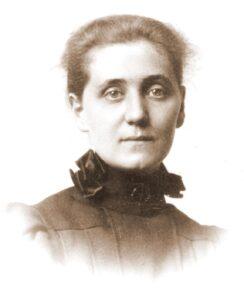
Jane Addams
A
| name | biography | more |
|---|---|---|
| Aberdeen, Lady | See Hamilton-Gordon, Ishbel | |
| Adams, Charles Francis | Author and historian (b. May 27, 1835; d. Mar. 20, 1915). President of the American Historical Association, 1893-94. | |
| Adams, Henry [V] | Author (b. Feb. 16, 1838; d. Mar. 27, 1918). Adams reflects on his visit to the Fair in his autobiography, The Education of Henry Adams (1918) | |
| Addams, Jane [V] | Social activist and reformer (b. Sep. 6, 1860; d. May 21, 1935). | |
| Aked, Dr. Charles Frederic [V] | Baptist minister from Liverpool, England (b. Aug. 27, 1864; d. Aug. 12, 1941). Visited the Fair the week of June 10. Later became clergyman in New York. | |
| Allerton, Robert [V] | Chicago philanthropist (b. Mar. 20, 1873; d. Dec. 22, 1964). Later became a trustee, honorary president, and benefactor for the Art Institute of Chicago. | |
| Altgeld, John [V] | Governor of Illinois, 1893–1897 (b. Dec. 30, 1847; d. Mar. 12, 1902). | |
| Anderson, Abraham Archibald “A. A.” [V] | Painter (b. 1846; d. Apr. 27, 1940). Organized the American Art Association in Paris. Visited the Fair with his wife and daughter for several weeks in late May and early June. The self-described “artist-hunter” later served as the superintendent of the Yellowstone Forest Reserve, 1902–05. | |
| Armour, Philip Danforth [V] | Chicago meatpacking magnate (b. May 16, 1832; d. Jan. 6, 1901) Founded the Armour Institute of Technology (now part of Illinois Institute of Technology). | |
| Arnold, Charles Dudley [M] | Photographer (b. 1844; d. May 7, 1927). C. D. Arnold was contracted to serve as the official photographer for the Exposition. He served in the same role for the 1901 Pan American Exposition in Buffalo and the 1907 Jamestown Exposition in Norfolk. | |
| Astor IV, John Jacob [V] | New York industrialist and socialite (b. Jul. 13, 1864; d. Apr. 15, 1912). Prominent member of the Astor family who died on the Titanic. Arrived in Chicago on June 26, 1893, to visit the Fair for a week. | |
| Atkinson, Edward [V] | Economist and political activist (b. Feb. 10, 1827; d. Dec. 11, 1905). Founder of the American Anti-Imperialist League. | |
| Austen, Alice [V] | Photographer (b. Mar. 17, 1866; d. Jun. 9, 1952). Elizabeth Alice Austen was a self-taught photographer based in Staten Island, New York. During her visit, she photographed the fairgrounds, including the Cold Storage Building fire on July 10. |
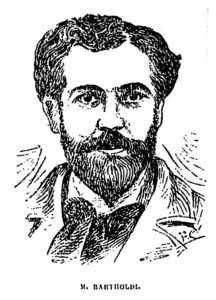
August Frédéric Bartholdi
B
| name | biography | more |
|---|---|---|
| Barrows, John Henry [P] | American clergyman of the First Presbyterian Church (b. Jul. 11, 1847; d. Jun. 3, 1902). Chairman of the General Committee of the World’s Parliament of Religions and in 1899 became president of Oberlin College. | |
| Bartholdi, August Frédéric [V] | French sculptor (b. Aug. 2, 1834; d. Oct. 4, 1904). Scupltor of Liberty Enlightening the World (the Statue of Liberty). His Washington and Lafayette sculptural group was exhibited in the Palace of Fine Arts and his statue of Christopher Columbus, cast in solid silver by the Gorham Manufacturing Company was displayed in their pavilion inside the Manufactures and Liberal Arts Building. Bartholdi and his wife visited the World’s Fair from September 10-24. | |
| Bartlett, Frederic Clay [V] | Artist (b. Jun. 1, 1873; d. Jun. 25, 1953). Visiting the 1893 World’s Columbian Exposition inspired him to become an artist. | |
| Barton, Clara [P] | Nurse who founded the American Red Cross (b. Dec. 25, 1821; d. Apr. 12, 1912). Barton spoke at the opening of the Congress of Representative Women on May 15 and visited the World’s Fair again in June. | |
| Bates, Katharine Lee [V] | Poet and author (b. Aug. 12, 1859; d. Mar. 28, 1929). She wrote “America the Beautiful” during a trip to Pike’s Peak just after visiting the 1893 World’s Fair. The line “Thine alabaster cities gleam” is thought to reference the White City. | |
| Baum, L. Frank [V] | Author (b. May 15, 1856; d. May 6, 1919). Author of The Wonderful Wizard of Oz (1900) while living in Chicago. He and his wife and sons visited the fairgrounds several times. Although his conception of the Emerald City is said to be inspired by the White City, he never credited this inspiration. | |
| Beadle, John Hanson [V] | Journalist (b. Mar. 14, 1840; d. Jan. 15, 1897). J. H. Beadle wrote several articles about the Fair. His Life in Utah (1870) was critical of Mormonism. | |
| Beck, Edward Scott “Ned” [V] | Chicago journalist (b. Dec. 12, 1868; d. Dec. 25, 1942). Reporter for the Chicago Tribune in 1893. | |
| Beckwith, Leonard Forbes [V] | Civil engineer and New York socialite (b. Jul, 16, 1844; d. Nov. 18, 1895). Reportedly went insane at the World’s Fair on Oct. 20, 1893. | |
| Beisen, Kubota [M] | Japanese artist (b. 1852; d. May 19, 1906). Came to Chicago as artist-correspondent for the Tokyo newspaper Kokumin Shimbun. Some of his watercolors of the Fair were published in Kakuryu Sekai Hakurankai bijutsuhin gafu (Okura Shoten, 1893). | |
| Bell, Alexander Graham [P] | Inventor of the first practical telephone (b. Mar, 3, 1847; d. Aug. 2, 1922). Visited the Fair in July with Helen Keller and spoke at the American Association to Promote the Teaching of Speech to the Deaf. | |
| Bennett, Henry Hamilton [M] | Photographer (b. Jan. 15, 1843; d. Jan. 1, 1908). Widely known for his photographs of the Wisconsin Dells, H. H. Bennett produced images of the 1893 World’s Fair used for stereoscope cards. | |
| Besant, Walter [P] | English novelist and historian (b. Aug. 14, 1836; d. Jun. 9, 1901). Presented at the Congress of Authors | |
| Bing, Samuel Siegfried “S.” [V] | German-French art dealer who promoted Art Nouveau works (b. Feb. 26, 1838; d. Sep. 6, 1905). | |
| Blanc, Marie-Thérèse [M] | French novelist, journalist, essayist, and literary critic who usually wrote under the pseudonym Th. Bentzon (b. Sep. 21, 1840; d. Feb. 7, 1907). She contributed to “Impressions of the World’s Fair” published in The Critic. | |
| Bly, Nellie [M] | Pen name of journalist Elizabeth Cochran (b. May 5, 1864; d. Jan. 27, 1922). Bly visited the Fair on October 20 and wrote a lively report on the Midway Plaisance for the New York World (Oct. 29, 1893). | |
| Bolton, Gambier [V] | English author and photographer (b. Aug. 24, 1854; d. Jul. 29, 1928). After visiting the World’s Fair, he toured the world photographing animals and accompanying Henry Pelham-Clinton, the Duke of Newcastle. | |
| Borden, Lizzie [V] | Famous for being accused and acquitted of the 1892 axe murders of her father and stepmother in Fall River, Mass. (b. Jul. 19, 1860; d. Jun. 1, 1927). Borden visited the Columbia Exposition incognito in early October. | |
| Bourget, Paul [V] | French author (b. Sep. 2, 1852; d. Dec. 25, 1935). He arrived on September 22 and spent two weeks at the Fair, about which he wrote complimentary views. Bourget was most recognized for his novel Cosmopolis (1892) and later was nominated for the Nobel Prize in Literature five times. | |
| Bourke, John Gregory [W] | Ethnologist, author, and U.S. Army captain (b. Jun. 23, 1846; d. Jun. 8, 1896). Worked for the Latin-American Department and curated exhibits for La Rabida. | |
| Boyesen, Hjalmar Hjorth | Norwegian-American author (b. Sep. 23, 1848; d. Oct. 4, 1895). Professor of Germanic languages at Columbia University, Boyesen wrote several essays about his experiences at the Fair. | |
| Boyton, Paul | Showman and amusement park developer (b. 1848; d. Apr. 18, 1824). Inspired by the success of the Midway attractions, he opened his Water Chutes park (the first permanent amusement park in Chicago) in 1894 and Sea Lion Park on Coney Island in 1895. | |
| Bradley, Mary Hastings* | Author (b. Apr. 19, 1882; d. Oct. 25, 1976). Her historical novel Metropolis (1933) has scenes set at the Fair. | |
| Bradley, Will H. [E?] [V] | Illustrator and artist (b. Jul. 10, 1868; d. Jan. 25, 1962). Bradley frequently visited the fairgrounds and he recorded exhibiting his artwork at the Fair. Bradley prepared artwork for Harriet Monroe’s The Columbian Ode (W. Irving Way & Co., 1893) and The Graphic History of the Fair (The Graphic Co., 1894). | |
| Brady, James “Diamond Jim” Buchanan [V] | Businessman and philanthropist (b. Aug. 12, 1856; d. Apr. 13, 1917). | |
| Brinton, Daniel Garrison [B] | Philadelphia surgeon and anthropologist (b. May 13, 1837; d. Jul. 31, 1899). Brinton assembled a notable collection of artifacts related to Native American languages and cultures. He participated in the Congress of Labor, Social Science, and Anthropology. | |
| Britton, Sumner [V] | Publisher. Came to Chicago to report on the Exposition for The Kansas City Star. Partner in the Reilly and Britton Company of Chicago. | |
| Brooks, Noah [M] | American journalist, editor, and author (b. Oct. 24, 1830; d. Aug. 16, 1903). Hhe contributed to “Impressions of the World’s Fair” published in The Critic. | |
| Brown, Hallie Quinn [P] | Educator and Black activist (b. Mar. 15, 1845 or 1850; d. Sep. 16, 1949). Presented a paper at the World’s Congress of Representative Women. | |
| Brown, Margaret “Molly” [V] | The “unsinkable” socialite and philanthropist who later survived the Titanic sinking (b. Jul. 18, 1867; d. Oct. 26, 1932). The Brown family spent four weeks in Chicago visiting the Fair. | |
| Brown, William Carey [W] | U.S. Army General (b. Dec. 19, 1854; d. May 8, 1939). Served in the Columbian Guard at the 1893 World’s Fair. | |
| Bruwaert, Francois Edmond [M] | French author (b. Sep. 25, 1847; d. Mar. 27, 1927). While serving as consul general for France in New York Bruwaert wrote a piece on the Exposition for Le Tour du Monde, LXV (1893). | |
| Buckingham, Duchess of [V] | Alice Temple-Nugent-Brydges-Chandos-Grenville (b. 1848; d. 1931)? Visited the Fair for several days in late May and early June. | |
| Bunner, Henry Cuyler “H. C.” [V] | American novelist, journalist and poet (b. Aug. 3, 1855; d May 11, 1896). He coined the moniker “White City” to describe the Columbian Exposition fairgrounds in his essay “The Making of the White City“ | |
| de Bourbon, Eulalia [V] | Her Royal Highness the Infanta of Spain (b. Feb. 12, 1864; d. Mar. 8, 1958). Visited Chicago from June 6–14, honored on “Princess Day (June 8) and returned to the fairgrounds each day after. | |
| Burroughs, Edgar Rice [E] | Author famous for his Tarzan series and other adventure, science fiction, and fantasy novels. (b. Sep. 1, 1875; d. Mar. 19, 1950). Member of the Michigan Cadets that encamped on the Midway Plaisance from June 1–15. |
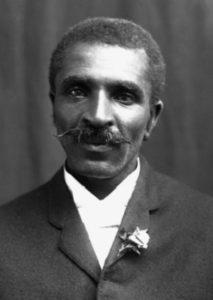
George Washington Carver
C
| name | biography | more |
|---|---|---|
| Cable, George W. (P) | Novelist (b. Oct. 12, 1844; d. Jan. 31, 1925). Presented Creole folk songs at the Congress of Authors on July 11. | |
| Cameron, J. Donald (V) | U.S. Senator from Pennsylvania (b. May 14, 1833; d. Aug. 30, 1918). In May, Cameron took his family to Chicago to see the Exposition and was accompanied by Henry Adams. | |
| Cannon, Henry LeGrand* | Amateur artist and Asian art collector (b. Nov. 18, 1858; d. May 6, 1895). Cannon and his wife planned to chaperone a large a party of New York society girls to the Fair. | |
| Carnegie, Andrew (V) | Steel industrialist and philanthropist (b. Nov. 25, 1835; d. Aug. 11, 1919). After visiting the Fair in late September, Carnegie wrote “Value of the World’s Fair to the American People” for the January 1894 issue of Engineering Magazine. | |
| Cartier, Warren (V) | Northern Michigan businessman (b. Jan. 12, 1866; d. Nov. 7, 1934). | |
| Carver, George Washington (E)(V) | Inventor (b. c.1864; d. Jan. 5, 1943). His painting Yucca and Cactus was included in Iowa’s art exhibit at the Fair, and he attended the Exposition on two occasions. | |
| Castleman, John B. (E) | Confederate officer and later a U. S. Army brigadier general from Kentucky (b. Jun. 30, 1841; d. May 23, 1918). Castleman and his family spent several weeks at the Fair, arriving on Sept 1. He and his two sons rode in the Saddle Horse Breeders’ Cup on Sept. 6. | |
| Catherwood, Mary Hartwell (V) | Author (b. Dec. 16, 1847; d. Dec. 26, 1902). She wrote of the Fair: “What shall we do when this Wonderland is closed?—when it disappears—when the enchantment comes to an end?” | |
| Cayvan, Georgia (P) | Popular stage actress (b. Aug. 22, 1857; d. Nov. 19, 1906). She wore a glass dress made for her by the Libbey Glass Company and exhibited in their factory on the Midway. Cayvan addressed the Congress of Representative Women on May 17 and returned to Chicago in September. | |
| Chambers, W. Paris (P) | Bandmaster and composer (b. Nov. 1, 1854; d. Nov. 13, 1913). Chambers performed a coronet solo during a concert by the Pullman Band on Chicago Day. | |
| Chase, Thorton (V) | First western convert to the Baháʼí Faith (b. Feb. 22, 1847; d. Sep. 30, 1912). Thought to have converted after attending the Parliament of the Religion. | |
| Chatfield-Taylor, Hobart | Chicago author and socialite (b. Mar. 24, 1865; d. Jan. 17, 1945). Mr. Chatfield-Taylor served as Consul to Spain and on the World’s Columbian Exposition Citizen’s Committee on Ceremonies, hosting several dignitaries visiting the Fair. He was a novelist and Molière scholar. | |
| Chatfield-Taylor, Rose Farwell | Chicago bookbinder, golfer, suffragist, and socialite (b. Mar. 7, 1870; d. Apr. 5, 1918). After the Fair, Mrs. Chatfield-Taylor ran the Rose Bindery in the Fine Arts Building. | |
| “The Cherry Sisters” (V) | Addie, Effie, Ella, Lizzie, and Jessie Cherry formed a terrible variety act from Iowa. | |
| Childs, George William (V) | Publisher and co-owner of the Philadelphia Public Ledger newspaper, philanthropist (b. May 12, 1829; d. Feb 3, 1894). Mr. Childs contributed to the Horticultural Department and co-sponsored the Philadelphia Workingman’s Model Home. | |
| Choate, Joseph H. (V) | Lawyer and diplomat (b. Jan. 24, 1832; d. May 14, 1917). Chaote, who later served as U.S. Ambassador to the United Kingdom (1899–1905), recorded being on the fairgrounds between September 8–14. | |
| Clark, Kate Freeman (V) | Painter from Mississippi (b. Sep. 3, 1875; d. Mar. 3, 1957). Her visit to the Exposition in Chicago inspired Clark to begin her artistic career. | |
| Clarke, Herbert L. (P) | Musician (b. Sep. 12, 1867; d. Jan. 30, 1945). Clarke played the coronet in John Philip Sousa’s Band on the fairgrounds. He went on to become a distinguished soloist, composer, and music educator. | |
| Cleveland, Grover (P) | 22nd and 24th President of the United States (b. Mar. 18, 1837; d. Jun. 24, 1908). President Cleveland addressed the crowd on Opening Day and pressed the button to open the Fair. | |
| Cochrane, Josephine (E) | Inventor of the dishwashing machine (b. Mar. 8, 1839; d. Aug. 3, 1913). The exposure from displaying her invention on the fairgrounds garnered sales to restaurants and hotels. Cochrane was inducted into the National Inventors Hall of Fame in 2006. | |
| Codd, Margaret Jane (M) | Educator, journalist, and children’s writer (b. ???; d. Nov. 25, 1930). Codd was a journalist reporting on the Exposition. | |
| Coleman, Kathleen “Kit” (M) | Irish-Canadian newspaper journalist (b. Feb. 20, 1856; d. May 16, 1915). Coleman was a special correspondent for the Toronto Mail during the World’s Fair in Chicago. Afterwards, she became one of the earliest accredited female war correspondents when she covered the Spanish–American War. | |
| Collins, James Joseph “Jimmy” (V) | Professional baseball player (b. Jan. 16, 1870; d. Mar. 6, 1943). Played with the minor-league Buffalo Bisons team in 1893 and visited the Fair after their last game on September 15. Collins was inducted into the Baseball Hall of Fame in 1945. | |
| Colón, Cristóbal (The Duke of Veragua) (V) | The 14th Duke of Veragua, a lineal descendant of Christopher Columbus (b. Jun. 8, 1837; d. Oct. 30, 1910). The Duke of Veragua from Spain was a distinguished guest of the United States. He and his family visited the Fair from April 29 through June 6. | |
| Columbus, Alexis (V) | Reportedly a lineal descendant (great-great-great-great-great-great grandson) of Christopher Columbus living in Buffalo, NY (b. c1789; d. ??). The 104-year-old arrived at the Fair on July 23. | |
| Coman, Katharine (P) | Professor at Wellesley College (b. Nov. 23, 1857; d. Jan. 11, 1915. Partner of Katharine Lee Bates, Coman presented a paper on “Women’s Wages Historically Considered” at the Congress of Labor on Aug. 28. | |
| Comstock, Anthony (V) | Anti-vice activist, U.S. Postal Inspector, and secretary of the New York Society for the Suppression of Vice (b. Mar. 7, 1844; d. Sep. 21, 1915). Comstock visited the Fair to investigate “belly dancing” on the Midway. He is subject of Amy Sohn’s The Man Who Hated Women: Sex, Censorship, and Civil Liberties in the Gilded Age (Farrar, Straus, Giroux, 2021). | |
| Cooper, Anna J. (P) | Author, educator, sociologist, and Black liberation activist (b. Aug. 10, 1858; d. Feb. 27, 1964). Cooper presented the opening address at the World’s Congress of Representative Women. | |
| Coppin, Fanny Jackson (P) | Educator and advocate for females in higher education. (b. Oct. 15, 1837; d. Jan. 21, 1913). Coppin presented at the World’s Congress of Representative Women. | |
| Corbett, James “Gentleman Jim” (P) | Boxer (b. Sep. 1, 1866; d. Feb. 18, 1933). Corbett gave a series of boxing matches in the Natatorium on the Midway in July. | |
| Corson, Juliet (E) | Cooking educator and journalist (b. Jan. 14, 1841; d. Jun 18, 1897). Corson ran the New York State Cooking School exhibit on the fairgrounds. | |
| Craddock, Ida (P) | Women’s rights and free speech advocate, sex counselor. (b. Aug. 1, 1857; d. Oct. 16, 1902). During the Fair, Craddock defended the “danse du ventre” being performed on the Midway against attacks by moral crusaders such as Anthony Comstock. | |
| Craven, William (The 4th Earl of Craven) | British peer and Liberal politician (b. Dec. 16, 1868; d. Jul. 10, 1921). After marrying New York socialite Cornelia Martin on April 18, Lord Craven and his bride visited the Fair from May 1 through at least May 10. | |
| Cregier, DeWitt Clinton | 31st Mayor of Chicago, from April 15, 1889, to April 27, 1891. (b. Jun. 1, 1829; d. Nov. 9, 1898). As Mayor, Cregier launched Chicago’s bid to host the World’s Fair. | |
| Crowley, Mary Catherine* (M) | Novelist and poet (b. Nov. 28, 1856; d. May 4, 1920). In 1894, her children’s novel The City of Wonders. was published and may have been based on her personal visit to the Exposition. | |
| Cummings, Edward* (V) | Father of poet e e cummings and assistant professor of sociology at Harvard (b. Apr. 20, 1861; d. Nov. 2, 1926) | |
| Custer, Elizabeth B. (V) | Author, public speaker, and widow of Gen. George Custer of the U. S. Army (April 8, 1842 – April 4, 1933). Mrs. Custer visited the Fair for as few days in early May. | |
| Cutting, Olivia Peyton Murray (Mrs. William Bayard Cutting) (V) | New York socialite (b. Sep. 19, 1855; d. Nov. 15, 1949). She arrived in Chicago by May 27 and stayed at the Auditorium. |
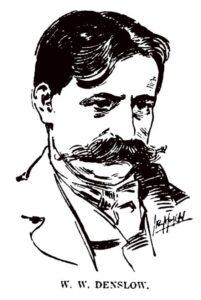
W. W. Denslow
D
| name | biography | more |
|---|---|---|
| Darrow, Clarence (V) | Lawyer (b. Apr. 18, 1857; d. Mar. 13, 1938). Spoke at the Suffrage Congress, part of the World’s Congress Auxiliary. After the assassination of Mayor Carter Harrison, Sr., Darrow defended Patrick Eugene Prendergast, who confessed to the killing. Later became famous as Defense attorney in the Leopold and Loeb murder trial (1924) and the Scopes Monkey Trial (1925). A bridge in Jackson Park is named after Darrow. | |
| Davenport, Homer | Newspaper illustrator (b. Mar. 8 1867; d. May 2, 1912). He worked for the Chicago Herald in 1893 and regularly visited the fairgrounds, where he fell in love with the Arabian horses on display in the Bedouin Camp on the Midway. His death was reported to have come out of grief over his cartoons depicting the Titanic disaster. | |
| Davis, Richard Harding (V) | Journalist, novelist, and dramatist (b. Apr. 18, 1864; d. Apr. 11, 1916). About the World’s Fair, he wrote: “You should have every sympathy with those writers who have taken refuge in calling it a fairy city and a dreamland.” (“The Last Days of the Fair” Harper’s Weekly Oct. 21, 1893, p. 1002.) | |
| Day, Clarence (V) | Author and cartoonist. (b. Nov. 18, 1874; d. Dec. 28, 1935). Day tells of his visit to the Chicago Fair as a college student in his autobiography Life with Father (1935). | |
| de Coubertin, Pierre (V) | French educator and historian and co-founder of the International Olympic Committee (b. Jan. 1, 1863; d. Sep. 2, 1937. The “Father of the modern Olympic Games” describes his captivation with the 1893 Exposition in his article “Building up a World Fair in France” (Century Magazine, Nov. 1898). | |
| Dean, Teresa | Journalist (b. 1857; d. Jan. 8, 1935). Among a small number of female journalists covering the 1893 World’s Fair, she was the most visible with a byline. Her popular “White City Chips” column ran almost daily in the Chicago Inter Ocean for the duration of the Exposition. She collected her articles in a handsome volume White City Chips in 1895. Dean is considered to be among the first female war correspondents for her stories on the Spanish-American War. | |
| Denslow, William Wallace (V) | Illustrator (b. May 5, 1856; d. Mar. 29, 1915). W. W. Denslow came to Chicago in the spring of 1893 to work as a staff artist for the Chicago Herald, providing illustrations for articles about the World’s Fair. A few years later, he met author L. Frank Baum, for whom he illustrated several notable children’s books including The Wonderful Wizard of Oz (1900). | |
| Densmore, Frances (V) | Self-taught anthropologist and ethnomusicologist who studied Native American music and culture (b. May 21, 1867; d. Jun. 5, 1957). Densmore was introduced to Indian music at the 1893 World’s Fair, and she later made valuable recordings of Chippewa songs. | |
| Disney, Elias (W) | Father of Walt Disney (b. Feb. 6, 1859; d. Sep. 13, 1941). Elias Disney was a carpenter living in Chicago during the World’s Fair. Family history indicates that his construction work for the 1893 World’s Fair may have inspired his son’s visions for amusement parks. | |
| Dix, Rev. Morgan (V) | Episcopal priest (b. Nov. 1, 1827; d. Apr. 29, 1908). The rector of Trinity Church in New York arrived in Chicago on June 1 to visit the Fair. | |
| Donnelly, Ignatious* | U.S. Congressman from Minnesota and fringe scientist (b. Nov. 3, 1831; d. Jan. 1, 1901). He authored pseudoscience and pseudohistory works about the mythical lost continent Atlantis, comet cataclysms, and the Baconian theory of Shakespeare authorship. Donnelly came to Chicago for the anti-trust convention in early June. | |
| Dowie, John Alexander | Evangelical and faith-healing minister (b. May 25, 1847; d. Mar. 9, 1907). He founded the city of Zion, Illinois, and the Christian Catholic Apostolic Church. Dowie opened a small Zion Tabernacle (called “The Little Wooden Hut” by some) on 62nd Street across from the entrance to the fairgrounds. | |
| Dowst, Charles O. | Publisher and toymaker (b. Jul. 23, 1853; d. May 22, 1919). Publisher of the National Laundry Journal and member of the Chicago Press Club. After seeing a Linotype machine at the Exposition, Dowst had the idea for a machine that could stamp out small toys. He founded a company, later named Tootsietoys, to make tiny charms and novelties such as the prizes in Cracker Jack boxes. | |
| Dreiser, Theodore | Author (b. Aug. 27, 1871; d. Dec. 28, 1945). Reporter and drama critic who later became known as a novelist for Sister Carrie (1900) and An American Tragedy (1925). His memoir A Book about Myself (1922) describes visiting the fairgrounds, which he describes as a “splendid picture of the world’s own hope for itself.” | |
| Du Chaillu, Paul | French-American zoologist and anthropologist (b. Jul. 31, 1831?; d. Apr. 29, 1903). Du Chaillu spend much of the summer at the fair, banqueting with the crew of the Viking ship on July 18, speaking at the National Geographic Conference in late July, and judging a swim race on the fairgrounds on August 11. | |
| du Pont, Pierre S. | American entrepreneur, businessman, and philanthropist (b. Jan. 15, 1870; d. Apr. 4, 1954). His visit to the Fair reportedly inspired Du Pont to build his Longwood Gardens in Chester County, Pennsylvania. Dupont served as president and on the board of directors of DuPont, as manager and president of General Motors, and as a founding board of director of the Empire State Building. |
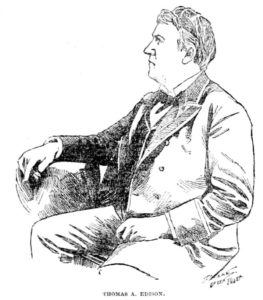
Thomas A. Edison
E
| name | biography | more |
|---|---|---|
| Earp, Wyatt (V) | American lawman (b. Mar. 19, 1848; d. Jan. 13, 1929). Famous for his Earp involvement in the 1881 gunfight at the O.K. Corral, Wyatt and his wife visited the Fair in July. | |
| Edison, Thomas Alva (V) | Inventor and businessman (b. Feb. 11, 1847; d. Oct. 18, 1931). Edison came to Chicago on August 14 and visited the fairgrounds incognito. |
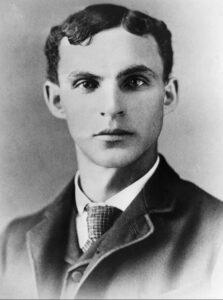
Henry Ford
F
| name | biography | more |
|---|---|---|
| Ferdinand, Franz (V) | Archduke of Austria (b. Dec. 18, 1863; d. Jun. 28, 1914). The imperial prince and heir presumptive to the crowns of the Hapsburgs made a brief visit to the Exposition in Chicago on October 3, as part of his world tour. The assassination of Franz Ferdinand at Sarajevo in 1914 was the spark that set off World War I. | |
| Field, Eugene (V) | Author of children’s poems and humor (b. Sep. 2, 1850; d. Nov. 4, 1895). The beloved “poet of childhood” lived in Chicago and visited the Fair many times. | |
| Field, Kate (M) | Journalist and editor (b. Oct. 1, 1838; d. May 19, 1896). Ardent booster for the Columbian Exposition, Mary Katherine Keemle “Kate” Field relocated to Chicago for nearly the entire duration of the Exposition, wrote a column about the Fair for the Chicago Herald, lectured at the World’s Auxiliary Congress, made many public appearances on the fairgrounds, and campaigned to save the White City from destruction. | |
| Field, Marshall | Chicago department store magnate (b. Aug. 18, 1834; d. Jan. 16, 1906). Field donated a million dollars to establish the Field Columbian Museum, preserving many treasures from the fair in the former Palace of Fine Arts. | |
| Fish, Marion Graves Anthon “Mamie”* | New York socialite (b. Jun. 8, 1853; d. May 25, 1915). Among the rulers of Gilded Age New York society, Mrs. Stuyvesant Fish was “said to be on her way” to visit the Fair in late May or early June. | |
| Fish, Stuyvesant | President of the Illinois Central Railroad (b. Jun. 24, 1851; d. Apr. 10, 1923). Fish served on the World’s Columbian Exposition Board of Directors and the Transportation and Way and Means committes from April 1890 through April 1891. He attended the Fair on Opening Day. | |
| Flood, James Leary “Jimmie” (V) | California millionaire (b. Feb. 21, 1857; d. Feb. 15, 1926). The son of mining “Bonanza King” James Clair Flood, James Leary built the Flood Building at the corner of Market and Powell streets in San Francisco. His former home, the James Leary Flood Mansion, still stands in the city also. He arrived in Chicago on June 4, staying at the Palmer House, and spend several days on the fairgrounds with friends visiting from France. | |
| Flower, Roswell P. (V) | Governor of New York from 1892 through 1894 (b. Aug. 7, 1835; d. May 12, 1899). He attended Dedication Day and visited the Fair in early June and for New York Day on September 4. | |
| Foin, Chin (V) | An upscale restaurateur in Chicago (b. c1878; d. Mr. 29, 1924). Came to Chicago to visit the Fair and stayed. Jessie Louise Nolton’s Chinese Cookery in the Home Kitchen (1911), thought to be the first English-language Chinese-American cookbook, reportedly took recipes from Chin Foin’s famous Mandarin Inn. | |
| Foltz, Clara Shortridge (P) | California’s first female attorney (b. Jul. 16, 1849; d. Sep. 2, 1934). Spoke at the Congress of Jurisprudence and Law Reform as part of the World’s Auxiliary Congress and advocated for public defenders to represent the poor in court. | |
| Ford, Henry (V) | Automobile industry magnate (b. Jul. 30, 1863; d. Apr. 7, 1947). Ford built his first engine after being inspired by seeing horse-drawn fire engine with a gasoline motor pumping water at the 1893 World’s Fair. | |
| Ford, Mary Hanford (P) | Lecturer, author, and suffragist (b. Nov. 1, 1856; d. Feb. 2, 1937). Spoke in the Woman’s Building on “Women and Art” (June 27) and “The Old Masters and the New” (October 24). | |
| Foster, Judith Ellen (P) | First female lawyer in Iowa and temperance advocate (b. Nov. 3, 1840; d. Aug. 11, 1910). Spoke on “Constitutional Prohibition, State and National” at the Temperance Congress on June 7. | |
| Foulke, William Dudley (P) | Journalist and literary critic (b. Nov. 20, 1848; d. May 30, 1935). He wrote about his visit to the fairgrounds in June and delivered an address on civil service reform at the Congress on the Science of Government on Aug. 7. | |
| French, Alice (P) | Writer under the pseudonym “Octave Thanet” (b. Mar. 19, 1850; d. Jan. 9, 1934). French lectured on “The Short Story” and the Folklore Congress on July 14 and wrote two sketches rural visitors to the Fair, “The Farmer in the North” and “The Farmer in the South.” for Scribner’s Magazine (Mar. and Apr. 1894) | |
| Fuller, Henry B. (P) | Chicago-based novelist and short story writer (b. Jan. 9, 1857; d. Jul. 28, 1929). Widely known for his 1893 novel The Cliff-Dwellers. |
********** UNDER CONSTRUCTION **********
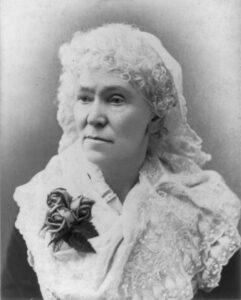
Matilda J. Gage
G
| name | biography | more |
|---|---|---|
| Gage, Matilda Joslyn | writer and suffragist | |
| Gardner, Isabella Stewart | art collector | |
| Gardner, Jack Lowell | businessman | |
| Garland, Hamlin | author | |
| George, Henry | economist | |
| Gibbons, James | Catholic cardinal | |
| Gibson, John J. | portrait photographer | |
| Gibson, William Hamilton | author and artist | |
| Gilder, Richard Watson | poet and editor | |
| Gilman, Daniel C. | American educator and academic (b. Jul 6, 1831; d. Oct. 13, 1908). Gilman served as the President of Johns Hopkins University from 1875 to 1901. He presented a paper in the Congress of Manual and Art Education in July. | |
| Gladden, Washington | Pastor of the First Congregational Church in Columbus, Ohio (b. Feb. 11, 1836; d. Jul. 2, 1918). As a national leader in the Social Gospel movement, he advocated for workers’ rights. He presented at the Congress of Moral and Social Reform in June. | |
| Glessner, John J. and Frances M. | Farm machinery industrialist | |
| Greene, Charles Sumner and Henry Mather | “Green and Green” architects | |
| Greene, Francis Vinton | U. S. Army officer serving as a colonel of the 71st New York Infantry Regiment (b. Jun. 27, 1850; d. May 15, 1921). | |
| Gresham, Walter | U.S. Secretary of State | |
| Gunsaulus, Frank W. | President of the Armour Institute in Chicago |
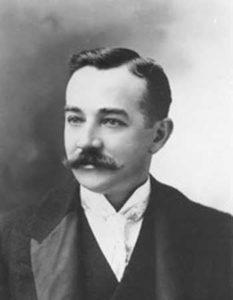
Milton Hershey
H
| name | biography | more |
|---|---|---|
| Hale, Edward Everett | Author, historian, and Unitarian minister | |
| Hamilton-Gordon, Ishbel | Lady Aberdeen, Marchioness of Aberdeen and Temair | |
| Handy, Jam | swimmer | |
| Handy, W. C. | musician | |
| Harbert, Elizabeth Boynton | women’s rights advocate | |
| Harper, Frances Ellen Watkins | abolitionist and suffragist | |
| Harrison, Benjamin | 23rd U.S. President | |
| Harrison Sr., Carter | Chicago mayor for five terms from 1879–1887 and in 1893 | |
| Harrison Jr., Carter | Chicago mayor for five terms from 1897–1905 and 1911–1915 | |
| Harrison, Edith Odgen | author | |
| Harrison, Richard Berry | Actor and teacher of the dramatic arts and elocution in Arkansas (b. Sep. 28, 1864; d. Mar. 14, 1935). Harrison met and befriended Black poet Paul Laurence Dunbar at the Chicago fair. | |
| Harrold, Orville | singer | |
| Hawthorne, Julian | American writer and journalist and the only son of novelist of novelist Nathaniel Hawthorne (b. Jun. 22, 1846; d. Jul. 14, 1934). Hawthorne wrote several portraits of the 1893 World’s Fair, including “The Lady of the Lake.” | |
| Hay, Oliver Perry | zoologist | |
| Hayes, Rutherford B. | 19th U.S. President (b. Oct. 4, 1822; d. Jan. 17, 1893). Hayes (one of only three living Presidents) and huis daughter Fannie attended the Dedication Ball on October 19, 1892, and Dedication Day exercises on October 21. | |
| Hays, Will Harrison | politician who implemented the “Hays Code” in Hollywood | |
| Hearst, Phoebe | philanthropist and suffragist | |
| Hearst, William Randolph | newspaper publisher | |
| Heinz, Henry J. | Founder of H. J. Heinz Company | |
| Helmholtz, Hermann von | German physicist and physician | |
| Hershey, Milton S. | chocolatier, businessman, and philanthropist | |
| Hirschman, Leb | Nevada County, California, pioneer who was part of the Jewish Gold Rush community. | |
| Hlaváč, Vojtěch | Czech conductor and composer | |
| Hoard, William D. | Governor of Wisconsin from 1889–1891 | |
| Hofer, Thomas Elwood “Billy” | Host of the Hunter’s Cabin | |
| Holmes, H. H. | Alias of Herman Webster Mudgett (b. May 16, 1861; d. May 7, 1896). | |
| Houdini, Harry | Magician | |
| Howells, William Dean | novelist, literary critic, and playwright | |
| Hubbard, Elbert | Author, businessman, and founder of the Roycrofters of East Aurora, New York | |
| Hyatt, Charles Eliot | U.S. Army General |
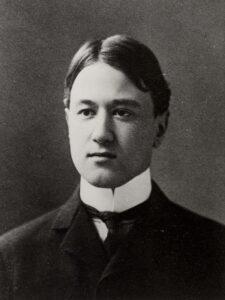
Charles Ives
I
| name | biography | more |
|---|---|---|
| Infanta Eulalia (See de Bourbon, Eulalia) | Spanish princess | |
| Ingalls, Melville E. | railroad president | |
| Isenburg, Prince Leopold of | ||
| Ives, Charles | composer |
J
| name | biography | more |
|---|---|---|
| Jackson, William Henry | photographer | |
| Jaques, Bertha | artist | |
| Jennings, Linda Deziah | suffragist | |
| Jewett, Sarah Orne | author | |
| Johnston, Frances Benjamin | photographer | |
| Jones, Casey | railroadman | |
| Jones, Jenkin Lloyd | Unitarian minister | |
| Jones, Sissieretta | singer | |
| Joplin, Scott | musician | |
| Judson, William Lees | painter |
K
| name | biography | more |
|---|---|---|
| Keller, Helen | author, lecturer, and disability rights advocate | |
| Kellogg, Alice De Wolf | artist | |
| Kellogg, John Harvey | inventor, physician, and director of the Battle Creek Sanitarium in Battle Creek, Michigan | |
| Kennon, Britannia W. | great-granddaughter of Martha Washington | |
| Kilbreth, James Truesdell | Customs | |
| Kilburn, B. W. | photographer | |
| King, Charles Brady | pioneering automobile owner | |
| King, Samuel Archer | balloonist | |
| Kirkland, Joseph | Author (b. Jan. 7, 1830; d. Apr. 29, 1894). American novelist, and author of The Story of Chicago (1892), and literary editor of the Chicago Tribune. Kirkland met with distinguished visitors to the Fair and presented at the Congress of Authors in July. | |
| Kostantinov, Aleko | Bulgarian writer |
L
| name | biography | more |
|---|---|---|
| Lamont, Daniel S. | U.S. Secretary of War | |
| Lease, Mary Elizabeth | populist orator | |
| Leiter, Levi | Chicago department store owner | |
| Leyendecker, J. C. | artist | |
| Lincoln, Robert Todd | lawyer and son of U.S. President Abraham Lincoln | |
| Lockwood, Belva Ann | women’s rights advocate | |
| Lounsbury, Thomas | literary historian and critic | |
| Lovecraft, Winfield | father of horror writer H. P. Lovecraft | |
| Low, Will Hicok | artist |
M
| name | biography | more |
|---|---|---|
| Macdonald, Charles B. | golfer and co-founder of the United States Golf Association | |
| Mackay, John W. | mining industrialist | |
| MacNeil, Hermon A. | sculptor and designer of the “Standing Liberty” quarter | |
| Marden, George A. | journalist, attorney, and Massachusetts State Treasurer | |
| Marshall, Benjamin | architect | |
| Mayer, Oscar | German-American founder of a processed-meat company (b. Mar. 29, 1859; d. Mar. 11, 1955) | |
| McAdoo, William Gibbs | Democratic Congressional representative and Assistant Secretary of the Navy | |
| McDonald, Alvin | South Dakota cave explorer | |
| McGlennon, Felix | songwriter | |
| McGlynn, Edward | Catholic priest (b. Sep. 27, 1837; d. Jan.7, 1900) | |
| McKinley, William | Governor of Ohio and 25th President of the United States | |
| McPherson, George | musician | |
| Merritt, Wesley | U.S. Army | |
| Miles, Nelson A. | U.S. Army Major-General | |
| Mills, John | physicist and engineer at the Bell Telephone Laboratories | |
| Mitchell, John Ames | author and artist | |
| Momerie, Alfred | English cleric and skeptic (b. Mar. 22, 1848; d. Dec. 6, 1900). Dr. Momerie attended and spoke at the World’s Parliament of Religions. | |
| Monroe, Harriet | poet, editor, and founder of Poetry magazine | |
| Monroe, Lilla Day | journalist | |
| Morton, J. Sterling | U.S. Secretary of Agriculture | |
| Muir, John | naturalist, author, and “Father of the National Parks” | |
| Muirhead, James Fullarton | Scottish editor and writer | |
| Mulrooney, Belinda | Entrepreneur. Mulrooney operated sandwich stand on the fourgrounds |
N
| name | biography | more |
|---|---|---|
| Norton, Charles Eliot | author | |
| Norton, James S. | Chicago lawyer and orator | |
| Nusbaum, Aaron | entrepreneur and philanthropist | |
| Nye, Bill | author |
O
| name | biography | more |
|---|---|---|
| O’Donnell, Hugh | labor leader | |
| Owens-Adair, Bethenia Angelina | social reformer and physician |
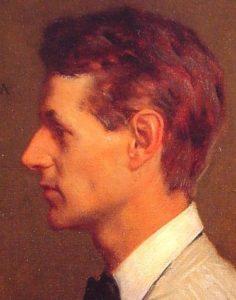
Maxfield Parrish
P
| name | biography | more |
|---|---|---|
| Paderewski, Ignacy | Polish pianist | |
| Palmer, John M. | U.S. Senator from Illinois | |
| Parker, Francis W. | educator | |
| Parrish, Maxfield | artist | |
| Pattison, Robert E. | Governor of Pennsylvania | |
| Payne, Henry | British painter and stained-glass artist | |
| Pelham-Clinton, Henry | The Duke of Newcastle | |
| Perky, Henry | inventor of shredded wheat cereal | |
| Pershing, Gen. John J. | U.S. Army | |
| Peterson, Jane | artist | |
| Phillips, EJ | actress | |
| Pokagon, Simon | author, leader in the Pokagon Band of the Potawatomi, and a Native American advocate. Pokagon delivered a speech titled “Red Man’s Greeting” on Chicago Day and published it as a birchbark book retitled Red Man’s Rebuke. | |
| Porter, Gen. Horace | Former U.S Army officer and Vice President of the Pullman Palace Car Company (b. Apr. 15, 1837; d. May 29, 1921). Porter was U.S. Ambassador to France from 1897 to 1905. | |
| Powell, John | musical composer and pianist | |
| Power, Kate Markham | journalist and editor | |
| Pratt, Richard Henry | Founder of the Carlisle Indian Industrial School in Pennsylvania | |
| Pulitzer, Katherine “Kate” | wife of newspaper publisher Joseph Pulitzer | |
| Pullman, George | train car magnate |
R
| name | biography | more |
|---|---|---|
| Rain-in-the-Face | Lakota leader | |
| Ralph, Julian | author | |
| Reeves, Ira L. | U.S. Army (b. Mar. 8, 1872; d. Oct. 23, 1939). Reeves served in the Columbian Guard. After the Fair, he enlisted in the army as a private and rose to the rank of colonel during World War I. | |
| Rehan, Ada | actress and model for the Montana silver statuue of Justice. | |
| Repplier, Agnes | essayist (b. Apr. 1, 1855; d. Dec. 15, 1950) | |
| Richards, Emily S. | founder of the Utah Woman’s Suffrage Association | |
| Robinson, Charles Mulford | journalist | |
| Rockefeller, Frank | businessman | |
| Rockefeller, John D.* | businessman | |
| Rockefeller, William D. | businessman | |
| Rockne (Rokne), Lars | Knute Rockne’s father (b. Feb. 25, 1858; d. May 2 , 1912). Exhibit carriages in the Norway section of the Transportation Building. | |
| Roebling, Emily Warren | Brooklyn Bridge engineer | |
| Roebling, Washington | son of engineers John A. and Emily Roebling | |
| Rogers, Henry Wade | President of Northwestern University | |
| Rogers, Will | actor | |
| Rolfe, William James | American educator and Shakespeare scholar (b. Dec. 10, 1827; d. Jul. 7, 1910). | |
| Roosevelt, Theodore | 26th President of the United States | |
| Rosenberg, Pauline Hanauer | social activist | |
| Russell, Charles M. | Western artist | |
| Russell, Lillian | actress | |
| Ruohomaki, Heikki | Finnish carpenter | |
| Rusk, Jeremiah McLain | former U.S. Secretary of Agriculture |
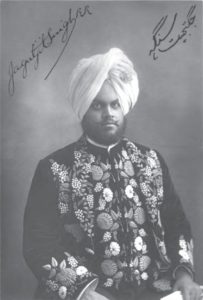
Jagatjit Singh, the Maharajah of Kapurthala
S
| name | biography | more |
|---|---|---|
| Sahei, Ohashi | Japanese publisher | |
| Sandow, Eugen | bodybuilder | |
| Saunders, William | scientist | |
| Schmidt, Minna | doll maker | |
| Schurz, Carl | German-American statesman | |
| Schahovskoy, Princess M. | Russian princess | |
| Schwackhöfer, Franz | Austrian scientist | |
| Scott, Clement | Theater critic (b. Oct. 6, 1841; d. Jun. 25, 1904). Scott was in Chicago for Opening Day at the Fair and for the celebration of Queen Victoria’s birthday on May 24. | |
| Scudder, Horace E. | American author and historian (b. Oct. 16, 1838; d. Jan. 11, 1902). Scudder served as editor of the Atlantic Monthly from 1890 to 1898. | |
| Selfridge, Harry Gordon | department store manager | |
| Semmes, Thomas Jenkins | Louisiana politician | |
| Sheldon, May French | author and explorer | |
| Shepard, Helen Miller Gould | New York socialite and philanthropist Helen Miller Gould, daughter of Jay Gould (b. June 20, 1868; d. December 21, 1938). Gould arrived in Chicago on June 13 and stayed for two weeks to see the Fair, residing at the Chicago Beach Hotel. | |
| Sherwood, Mary Elizabeth Wilson “M.E.W.” | author and socialite | |
| Sickles, Daniel | politician and U.S. Army general | |
| Simpson, “Sockless” Jerry | Kansas politician | |
| Singh, Jagatjit | The Maharajah of Kapurthala | |
| Sloane, John W. | furniture businessman | |
| Sloane, William Douglas | businessman | |
| Smith, Francis Hopkinson | author and artist | |
| Smith, Julia Holmes | physician and suffragist | |
| Smith, Dr. Samuel F. | Baptist minister and author who wrote the lyrics to “My Country, ’Tis of Thee” (b. Oct. 21, 1808; d. Nov. 16, 1895). He visited the Fair in the early summer. | |
| Snowden, A. Louden | U.S. Ambassador to Spain (July 22, 1892 – June 3, 1893) | |
| Sousa, John Philip | bandleader | |
| Speer, Robert W. | Mayor of Denver | |
| Spence, Catherine Helen | Australian author, teacher, journalist, social activist | |
| Stanford, Leland | attorney, industrialist, philanthropist | |
| Stanton, Samual Ward | steamship artist. Died aboard the Titanic. | |
| Stead, William | British editor, author, and social activist | |
| Stedman, Edmund Clarence | Poet, editor, critic, and essayist (b. Oct. 8, 1833; d. Jan. 18, 1908). Stedman was in the inaugural class inducted into the American Academy of Arts and Letters. He presented at the World’s Youth Congress in July. | |
| Stevens, Mrs. Paran | (née Marietta Reed) New York socialite | |
| Stevenson, Adlai | Vice President of the United States | |
| Stine, David | architect | |
| Storrs, John | sculptor | |
| Strong, Harriet Russell | (née Harriet Williams Russell) inventor | |
| Stouch, Frank | dancer | |
| Sullivan, Anne | teacher | |
| Sullivan, Thomas Russell | playwright | |
| Sullivan, William | inventor of the portable Ferris Wheel | |
| Swift, George B. | 36th Mayor of Chicago (April 8, 1895 – April 15, 1897) | |
| Swing, David | pastor |
T
| name | biography | more |
|---|---|---|
| Tainter, Charles Sumner | Inventor and audio businessman (b. Apr. 25, 1854; d. Apr. 20, 1940). Tainter maintained nickel-operated American Graphophone machines around the fairgrounds. | |
| Tesla, Nikola | inventor | |
| Thanet, Octave See French, Alice |
See French, Alice | |
| Thompson, Fred | theater writer | |
| Thompson, Maurice | Naturalist, lawyer, novelist, poet, and essayist (September 9, 1844 – February 15, 1901. James Maurice Thompson participated in the Congress of Authors in July. | |
| Thomson, Frank | railroad executive | |
| Thruston, Henry Clay | Claimed to be “the tallest man in America” | |
| Tilyou, George C. | Founder of Steeplechase Park in Coney Island | |
| Todd, F. Dundas | photographer | |
| Tollemache, William | 9th Earl of Dysart | |
| Townsend, George Alfred | Journalist and novelist, often referred to as “Gath” (b. Jan. 30, 1841; d. Apr. 15, 1914). | |
| Train, George Francis | entrepreneur, world traveler, and eccentric personality | |
| Trent, William Peterfield | English professor | |
| Twain, Mark | pen name of author Samuel Langhorne Clemens | |
| Twichell, Harmony | daughter of Rev. Joseph Twichell, friend of Mark Twain, and future wife of composer Charles Ives |
V
| name | biography | more |
|---|---|---|
| Van Alen, James J. | socialite | |
| Van Bergen, Anthony T. | businessman | |
| Van Rensselaer, Mariana Griswold | Architectural critic and author who published as Mrs. Schuyler Van Rensselaer or M. G. Van Rensselaer | |
| Van Vechten, Carl | writer and artistic photographer | |
| Vanderbilt II, George Washington | businessman | |
| Vanderbilt, Frederick William | businessman | |
| Vilas, William F. | U.S. Senator | |
| Vukasović, Vid Vuletić | ethnographer |
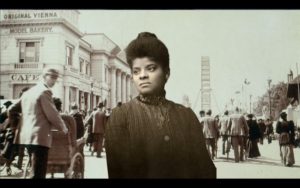
Ida B. Wells
W
| name | biography | more |
|---|---|---|
| Walker, Francis A. | economist | |
| Walker, John Brisben | publisher | |
| Ward, Henry Augustus | scientific displays | |
| Warner, Charles Dudley | Author (b. Sep. 12, 1829; d. Oct. 20, 1900). Essayist and novelist, Warner is best remembered as the co-author with Mark Twain of the 1873 novel The Gilded Age: A Tale of Today. | |
| Washburne, Hempstead | 32nd Mayor of Chicago | |
| Washington, Booker T. | educator, author | |
| Watkins, Frances Ellen | See Harper, Frances Ellen Watkins | |
| Watterson, Henry | U.S. Congressman and journalist | |
| Webb, Seward | businessman | |
| Webster, Richard | MP | |
| Weeden, Mary Howard | artist and poet who went by the name “Howard Weeden” | |
| Wells, Emmeline | journalist and women’s rights advocate | |
| Wells, Ida B. | author, social activist, and protestor of the Exposition | |
| Westinghouse, George | industrialist | |
| Whigham, Henry James “H. J.” | Scottish writer and golfer | |
| White, Clarence Hudson | photographer | |
| Willard, Frances E. | national president of Woman’s Christian Temperance Union | |
| Williams, Fannie Barrier | educator and social activist | |
| Williams, Sylvanie Francoz | educator | |
| Windeyer, Margaret | Australian journalist and librarian | |
| Wister, Owen | author | |
| Wooldridge, Clifton W. | detective | |
| Wooley, Jesse Sumner “J. S.” | photographer | |
| Worthington, William Jackson | judge | |
| Wright, Frank Lloyd | architect | |
| Wright, Wilber and Orville | The Wright Borthers, aviation pioneers | |
| Wyckoff, Walter | Princeton professor and social scientist |
Y
| name | biography | more |
|---|---|---|
| Yadrintsev, Nikolai | Siberian explorer, archaeologist | |
| Yeomans, James D. | politician and railway executive | |
| Yoharito, Komatsu | Prince of Japan | |
| Yuengling, Frederick | Owner of D. G. Yuengling & Son brewery |
Z
| name | biography | more |
|---|---|---|
| Ziegfeld Jr., Florenz | entertainment mogul | |
| Zukor, Adolph | Hungarian-American film producer best known as one of the three founders of Paramount Pictures (b. Jan. 7, 1873; d. Jun. 10, 1976). Came to Chicago at age 20 to visit the Fair and then establish Zukor’s Novelty Fur Company. |
